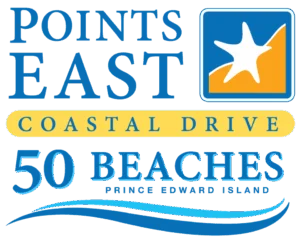
Locations of the signs that we placed:
Basin Head | Brudenell River | Georgetown | Lakeside | MacFarlane Rd Beach | Machons Point | North Lake | Pinette Park Beach | Point Prim | Red Point | Sheep Pond | Shipwreck Point | Souris Beach | St Peters Lighthouse Beach | Wood Islands
Share the Shore
Code of Care
Leave your vehicle behind
ATVs and dirt bikes driving on the dunes kill the vegetation that holds the fragile sand structure together. Without it, the sand blows away, creating gaps in the dune. Over time, the height of the dunes diminishes and there is less protection for the land and communities that lie behind. On the beach above the high-water mark, vehicles may drive over nests or young, flightless birds. On a cliff edge, they damage the roots that stabilize the soils that lie over the bedrock.
In Prince Edward Island, you are never far away from the sound of the waves or the fresh smell of sea air. We have over 800 km of coastline and a further 2,400 km of shores in our protected estuaries. To east, north, south, and west a new and subtly different coastal landscape creates a feast for the eyes.
Residents and visitors alike love this beautiful place and many feel a deep connection to it, as a place to play and sometimes as a place to work. The estuaries are an important resource for the shellfish industry and there are many nearshore fisheries around the Island that are linked to our coastline (Irish moss, lobster, snow crab).
The sandstone cliffs, sandy and cobble beaches, and north shore dunes all form part of an extensive and ever-changing linked ecosystem. While inland mountains and prairies change slowly over geological time, we can see many changes to the Island coastline happening over the course of our lifetimes. This is a natural process, driven by winds, tides, and waves. The cliffs erode and feed sand to the beaches. Woody debris and seaweed on the beaches collect sand and build dunes or coastal plains. In this way, the land is eroding cliffs and is not lost, just repurposed.
The coastlines of PEI are also rich in wildlife. Many beaches, cliffs and estuaries are home to ground-nesting birds that stop at this point on the Atlantic migratory flyway to rear young every summer. Much of the coast is internationally recognized as Important Bird Areas because of the rich habitat mix of salt marsh wetland, beach barrier ponds, sandspits, and barrier islands scattered along our coast.
Our dynamic and fragile coastline faces many challenges. The sea level has been rising around the Island for 8,000 years and continues to rise at an accelerated pace now. Strong storm surges and less ice in the Gulf of St. Lawrence in recent years put pressure on shorelines and in some instances can change the shape of the shore very quickly. Our efforts to control or manage those forces often have unintended consequences. Please consider the fragility of these beautiful landscapes while you’re here and walk lightly on this land.
If you would like more information on PEI’s coastline, Important Bird Areas, or Island Nature Trust, please get in touch using any of the contact options listed below.
Island Nature Trust
15 Crown Drive, Charlottetown PE
Telephone: 902-892-7513 / 902-566-9150
Email: admin@islandnaturetrust.ca
www.islandnaturetrust.ca


